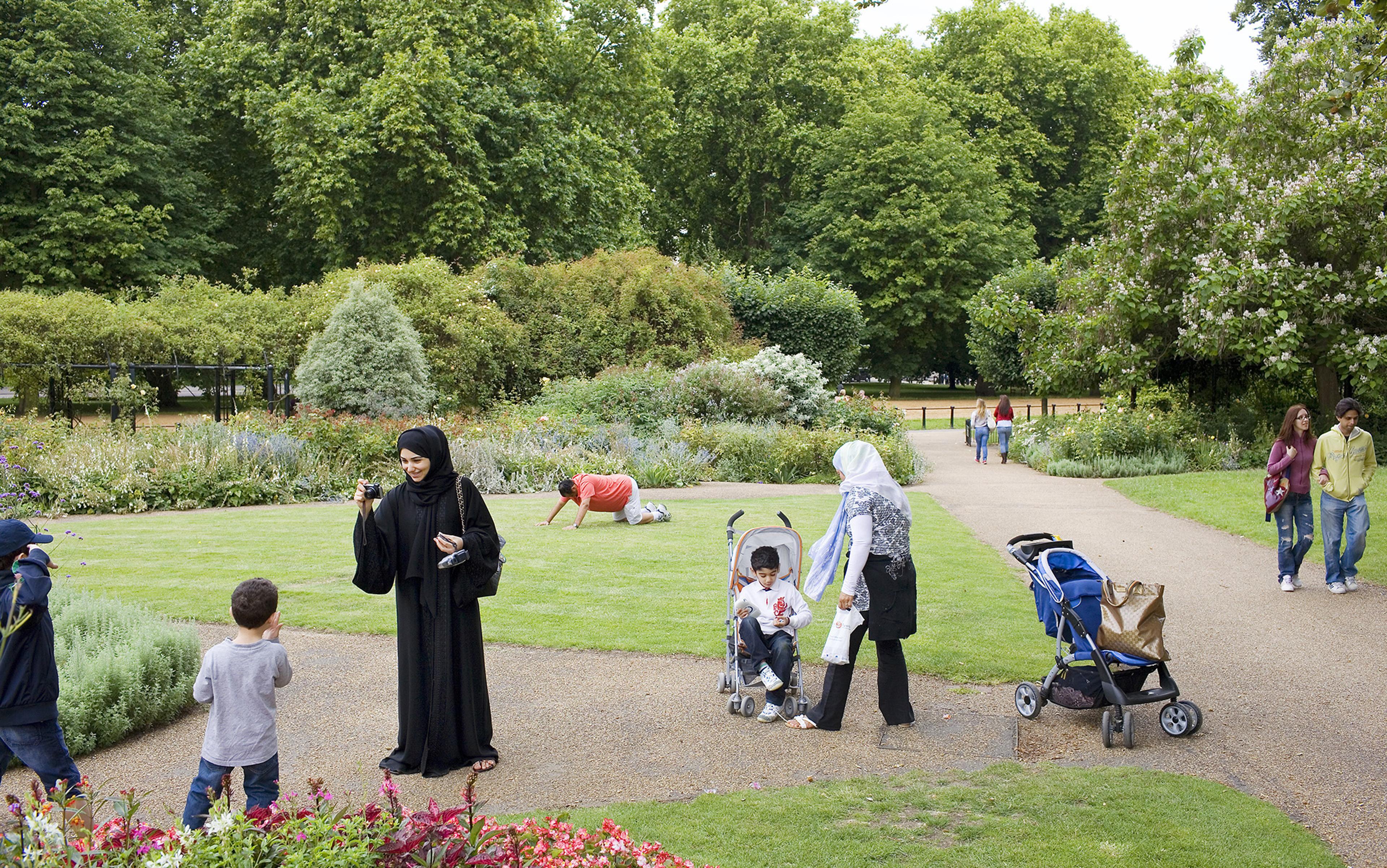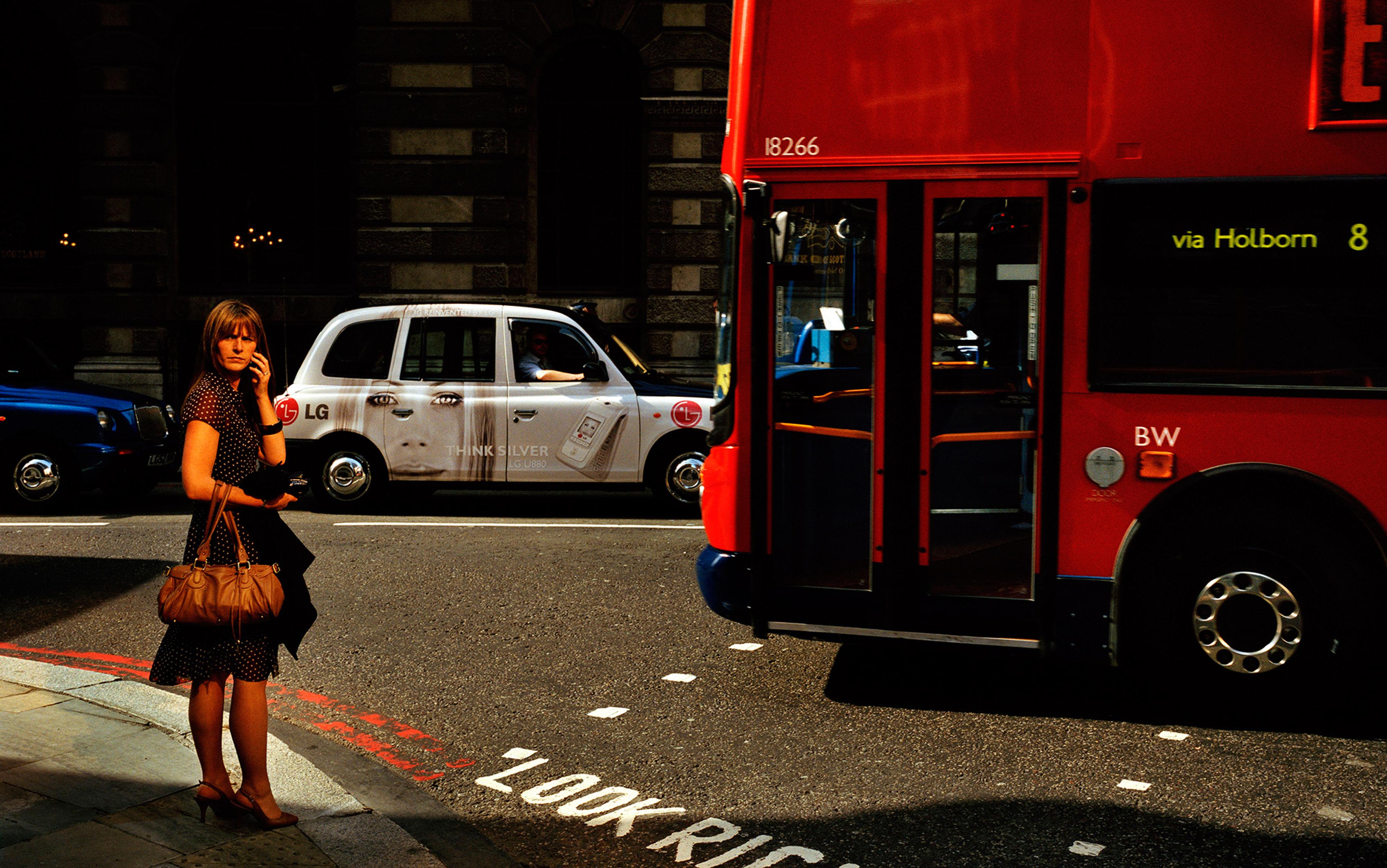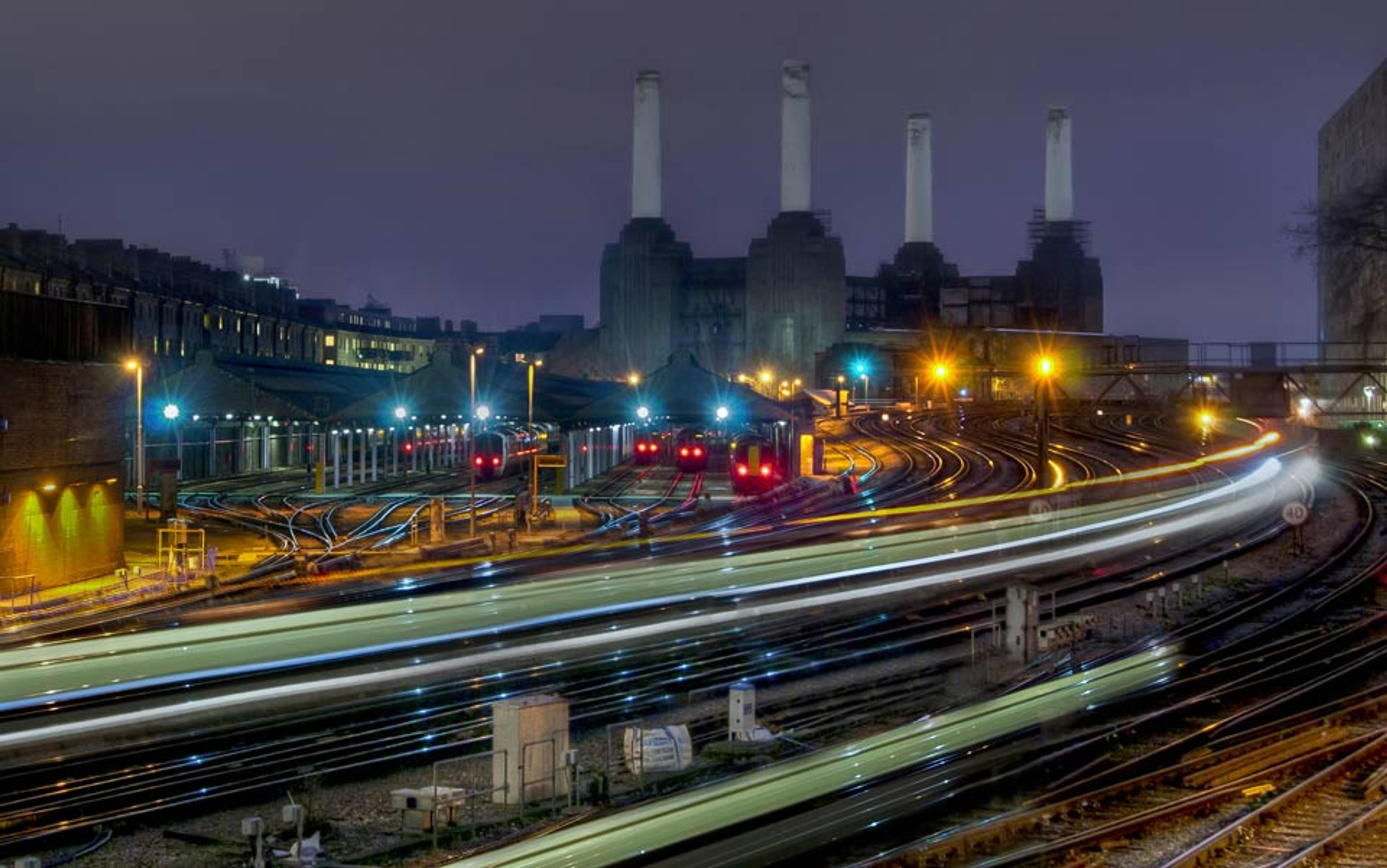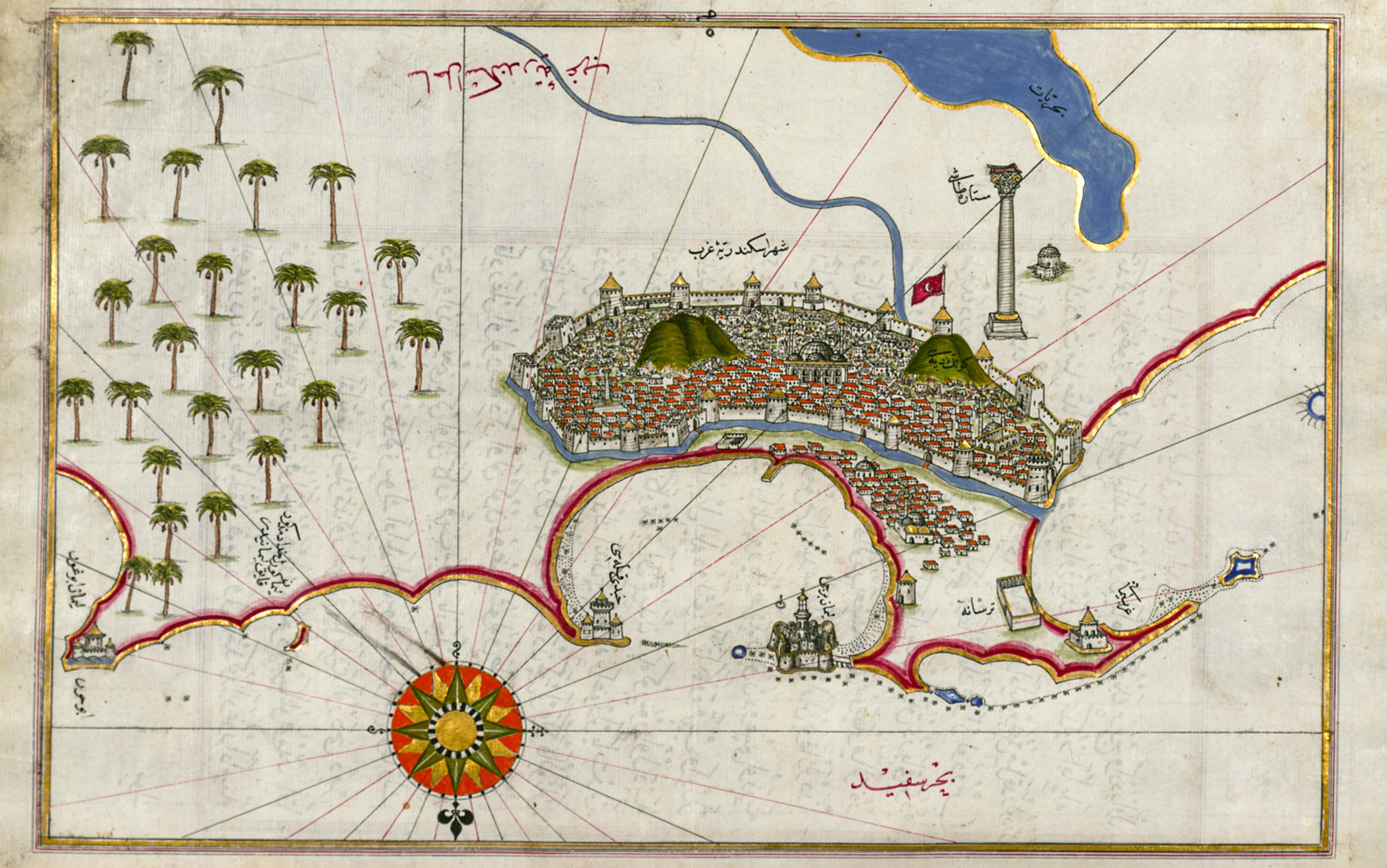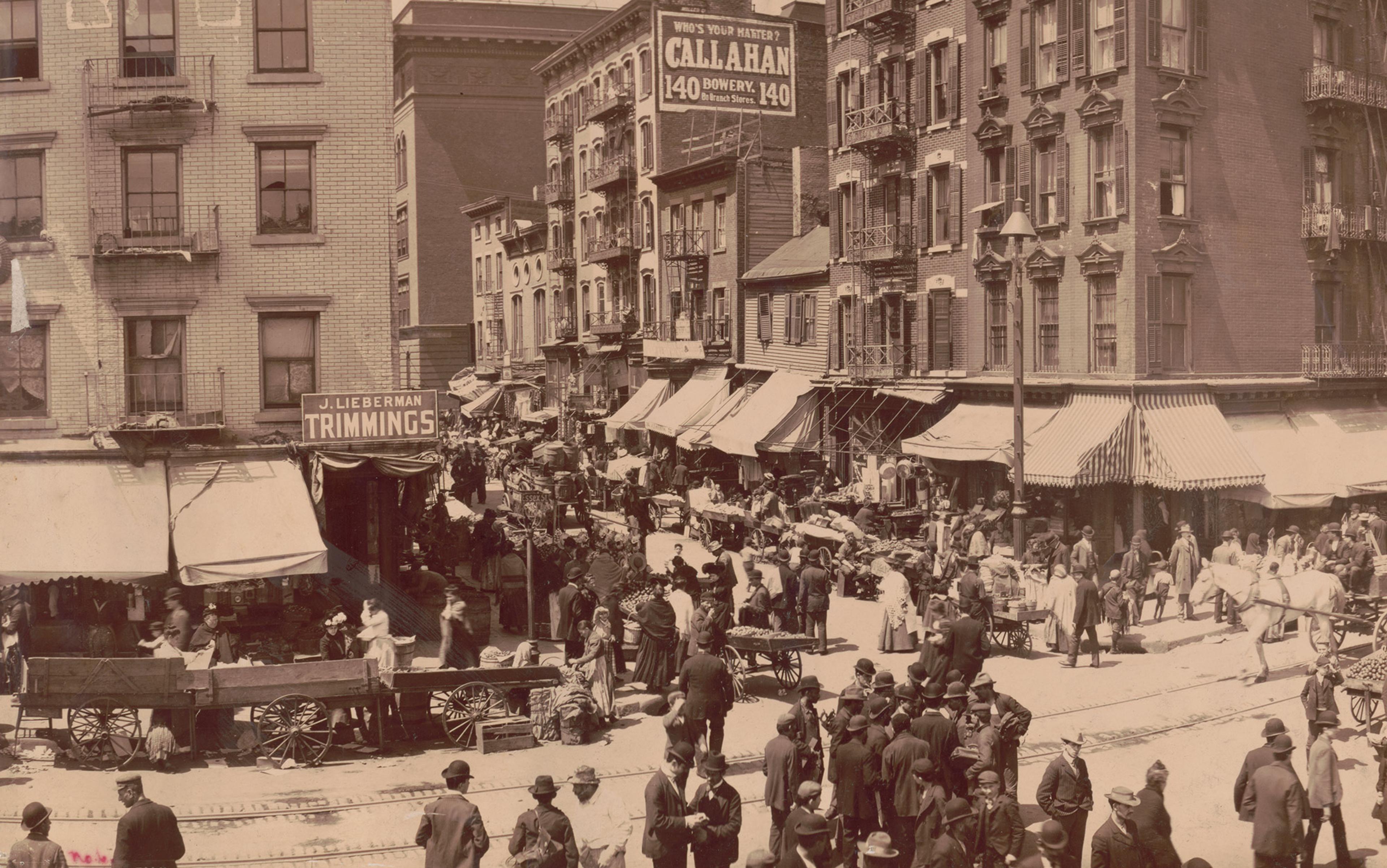We’d gathered by the ticket booth outside the South Bank Centre in London at 6.30pm. It was the last Friday in May but there was a slight chill in the air, so we clustered in groups — couples sticking together, friends facing in towards each other. Those who’d arrived alone looked around, checking cell phones and waiting.
One man had taken the title of the event — a ‘Mini Midnight Run’ — literally, and wore only jogging gear. He hadn’t read his notes, which explained that proceedings would end at 2.30am. Another man, a young American backpacker, had stumbled upon the listing by chance and wanted to do something ‘epic’ on his last night in London, ‘before heading to Europe’. Like most of the others, I looked as if I had just come from the office, but I’d changed into trainers and pulled on a thick coat, expecting the worst of the weather. Unsure what lay ahead, we enjoyed not knowing.
Over the past few years, the young Nigerian-born artist and poet Inua Ellams has been leading impromptu ‘runs’ around London by night, searching the streets for alternative stories and new configurations. On his blog, he writes that the project originated in serendipity:
One autumn evening, in 2005, a friend and I lost patience waiting for a bus, and on a whim decided to walk the bus’s route. Six hours later, we’d drifted across London from Battersea to Chelsea, Victoria, Vauxhall, the West End into the small hours of the morning… surprised at how fresh and energised we felt, marvelling at the deserted streets of the city, without its hustle and bustle.
Since then, Ellams has organised ‘Runs’ in London and, recently, Barcelona, with troupes of artists, performers and ordinary participants such as myself, the urban drift punctuated by games, tasks and challenges. On our evening, however, his first task was to turn us from an atomised cluster into a group. Commandeered into closely arranged lines, we introduced ourselves to each other. We played a team game to give us a sense of common purpose, and sang together in public, in front of the groups drinking outside the Royal Festival Hall. Then we set off, to ‘reclaim the city’.
As we walked, we began to talk to each other; newly bonded through song, we went in search of what we had in common, swinging across the river and plunging into darkening streets. On one quiet corner, behind the Savoy Hotel, we played another game. In a paved precinct off St Martin’s Lane, we devised short plays that we performed for one another. There was something exhilarating and liberating in shedding our inhibitions, allowing ourselves to explore spaces that we commonly crossed without consideration, and to enjoy the company of strangers.
By 1.30am, we had found our way to Chinatown, radiant with neon glare, and still thronged with strings of bodies weaving through the streets. It was time to sit down and take stock with bowls of noodle soup. Here, Ellams explained why he conducted these tours, most of which run all night, from 6.30pm to 6.30am. There was something special about watching the city transformed by night and then seeing dawn bring life and light back to the empty streets, he told me. Others who had been on previous runs spoke of sublime moments — an exquisite recital outside a Tube station; or a sense of community-building, arising out of a game of ‘bag-ball’ played on a grassy plot that was normally out of bounds.
By using an urban place against the grain of common practice, one owned it — albeit for the briefest moment
The purpose of the Midnight Run, it seemed to me, was about reconnecting with other people — as well as our civic selves and the often fleeting ties that make up everyday metropolitan life. It is so easy to forget that cities are brilliant at bringing people together, forcing them to interact and to benefit from one another.
Walking back across the bridge with the American backpacker after the run, we talked about the evening’s unexpected joys. We’d spent six hours traversing streets I knew far too well — but only as background scenery to a hectic metropolitan life. Though my attitude to these places was unchanged, I’d been reminded of something important about the city in which I live: for a moment, I’d been opened to chance encounters and relationships. As my new companion and I walked, we agreed that while we might never see our fellow runners again, it had been good to meet them, to know them for an evening. And this, we felt, said something about the power of the city.
Later, Ellams told me how he’d taken a group of 80-year-old Londoners on a run that revealed that, for the elderly, the city can be a territory of no-go areas, hidden threats and restrictions. The octogenarian ‘runners’ were members of the Entelechy Arts group in south-east London, run by the artistic director David Slater. As they moved through the city, they had talked about their fears — how places no longer seemed open, how freedoms had been lost. At the Royal Society of Arts, they ‘collected data’ — the phrase is Slater’s — through exercises, games and conversation, and ‘played with themes of place, ownership, citizenship, and social change’. But mostly, Slater told me, ‘we just had fun’. Stories were told and written on a wall with marker pens, and on the way home, Slater said, ‘imaginations [were] firing’.
When I awoke on the morning after my run, Istanbul dominated the news. Police had used tear gas and water cannons to disperse a crowd who’d gathered in Taksim Square to protest its redevelopment as a shopping precinct. The project had been given the green light by the city and the government, but locals were concerned that one of the few central places where people could congregate outdoors was being given over to yet more shops, ridding the city of the trees under whose branches they had enjoyed the shade. Later that weekend, a larger gathering formed, this time protesting the heavy-handed treatment meted out by the police. Amid the crowd, a couple danced a tango, entwined and poised, their faces covered in gas masks.
While my pleasurable nocturnal adventure in London had none of the significance of that balletic dance in Taksim Square, I discerned a slender connecting thread: both actions understood that by using an urban place against the grain of common practice, one owned it — albeit for the briefest moment. For me, it was a reminder of what I had lost in my everyday use of the city: a sense of wonder, an openness to serendipity. For the dancers, it was a symbol of a steadfast refusal to let something go, to tighten the grip and find the connection between the place and the dance.
Henri Lefebvre, the French Marxist philosopher (and most famous taxi driver in Paris), observed in the late 1960s that there are no neutral places in the city; that the different threads of power find their way into every crack of the metropolis, constructing a cartography of exclusions and barriers. This map can sometimes be so ubiquitous that it appears invisible. Yet it is manifest in the ways that a city is divided into zones, neighbourhoods and no-go areas.
For Lefebvre, the city was both the problem and the solution to the quandaries of our everyday lives. Within this political perspective, the people have a common right to utilise city space without restriction. Lefebvre argues that viewing those spaces as the theatre for everyday life changes our sense of belonging: being part of the city is no longer determined by ownership or wealth, but by participation. In consequence, our actions change and refine the city.
This idea, which Lefebvre called ‘the right to the city’ and developed in his influential book Le Droit à la Ville (1968), remains a potent hope. It was reinforced in the autumn of 2011 at Occupy camps around the world, when ordinary people transformed urban spaces through direct action. That hope is also present in numerous campaigns (in Bogotá, or Rio de Janeiro, for example) that stress the necessity of efficient bus routes to a city’s poorest parts, and in studies of the unequal distribution of health provision, education, green spaces, and housing. It was this kind of inequality, initiated by a rise in bus fares, that inspired the recent protests in Brazil.
There are few places left in the city where you can sit down without first having to buy a coffee
Reclaiming the city can take many forms. For example, three weeks after the gas-masked tango, after running battles, police violence and threatening rhetoric, another portrait emerged from Taksim Square. On 17 June, following a weekend in which the police had succeeded in clearing the square, yet while the stink of tear gas still hung in the air, the performance artist Erdem Gunduz showed up at 6pm and stayed, stock-still, facing the Atatürk Cultural Centre, with his hands in his pockets. He remained there for eight hours; by 2am — when police moved in — he had been joined by 300 people. His silent protest seized the space back from the authorities without saying a word.
As the geographer David Harvey notes in his book Rebel Cities (2012), the creation of common spaces within the city — public areas where we can congregate without fear, or without the constant demands of the market — is stalling. Enclosed places free of CCTV, private security, Starbucks, gates, or regulations are becoming increasingly rare. The privatisation of public space is proliferating and is often too subtle to notice.
In 2007, the San Francisco art-activist group Rebar tested the openness of various privately owned public spaces in the city, such as courtyards and gardens in front of office blocks. In a series of organised ‘paraperformances’ — group yoga sessions, flying kites, chanting — Rebar discovered how public these spaces really were. Often, within minutes of starting up, the activists were confronted by building managers and private security staff and told to stop. As Harvey notes, it is not enough to define a place as a common ground, because it will always be contested. Rather, the preservation of the commons is a continuous act, a process of stating and restating the public use of a place.
We have lost many of the public spaces of the city without knowing it. As the journalist Anna Minton notes in Ground Control: Fear and Happiness in the 21st-century City (2009), the ‘urban renaissance’ of many city centres has resulted in regenerated zones ‘designed purely with shopping and leisure in mind’. These new ‘malls without walls’ are in the hands of private owners who want maximum returns on their investment and, as a result, extinguish much that makes the city human. There are few places left in the city where you can sit down without first having to buy a coffee.
This idea of owning public spaces is complex. The economist Garrett Hardin, whose essay ‘The Tragedy of the Commons’ (1968) was published the same year as Lefebvre’s influential work, said that, left to their own devices, individuals are mostly likely to behave selfishly and abuse common property. In contrast, in Governing the Commons (1990), the American political economist Elinor Ostrom showed that the commons was not a zero-sum game. It led to the development of far better systems of management, compared with private ownership or government control. Yet, as David Harvey reminds us, this ownership arises not just from contracts or negotiations, but from action. The reclamation of civic space does more than change the city: it creates citizens.
Through violent and defiant protests, provocative performances, citizen action, even unsolicited horticulture, the battle for civic space continues to reinvent itself. Sometimes, the action starts in reaction to the state. Other times, it kicks off because the powers-that-be are too slow to react to events, and local residents or campaigners take matters into their own hands, taking the urban domain to be a common realm rather than ‘someone else’s problem’.
The battle cry can be strident. The SlutWalk movement began life in Toronto in April 2011, after a local police officer named Michael Sanguinetti, advising students on personal safety, said: ‘women should avoid dressing like sluts in order not to be victimised’. Organised in anger, the original event saw women take to the streets in fishnets and bras, waving banners that read: ‘I’m a slut, don’t assault me’, or ‘Slut Pride’. The protest sparked copycat walks around the world.
Reclamation of the city begins with the realisation that ‘that’ place, whatever its problems, is in fact ‘our’ place
The Better Block campaign in the US couldn’t be more different. Set up in April 2012, when local activists and planners decided to do something for themselves, Better Block focuses on improving a single block in an underused neighbourhood and making it more people-friendly by providing cycle lanes, trees, lighting and pop-up businesses such as cafés with outdoor seating. Better Block are not alone: Depave, a group from Portland, Oregon, tears up unwanted asphalt and returns the land to gardens; the Edible Bus Stop in south London is a guerrilla gardening group that turns neglected spaces into vital green oases.
But what these groups all have in common is an understanding that place and action are connected. More; they demonstrate how actions can potentially become moments of transformation. The demand for common ownership of a space requires a certain type of citizen who is willing to roll her sleeves up and muck in. This is what the sociologist Richard Sennett so eloquently identifies in his book Together: The Rituals, Pleasures and Politics of Co-operation (2012); co-operation is a skill that we have to learn and constantly practise. It’s not easy, but it is worth the trouble.
I found a surprising example of this valuable lesson when I was travelling in Bangalore in March 2012. The Ugly Indian is an anonymous collective of successful business people from the IT and financial services industries who were fed up waiting for local government to make their city clean and liveable. Stealthily, they’d taken over control of a quiet residential street in a tiny neighbourhood, and readied themselves for a makeover.
When I arrived, volunteer workers from a nearby office block were already busy, using gloves, pickaxes and shovels to move piles of rubble and rubbish, overflowing from the pavement onto the road. One of the office managers, pausing for a cigarette, admitted that for many of these educated desk-jobbers this was a first taste of manual labour. As they scrapped and shovelled in their weekend gear and business shoes, surgical face-masks protecting them from the dust, they were already starting to make a difference. They’d cleared and cemented a new, even pavement and a well-crafted curb. Now they started to talk about planting bushes and flowers.
For the Ugly Indian, the solution begins with ‘the 50 feet in front of your house or your office’. The local authorities were clearly not about to change, but this was no reason ordinary citizens should not attend to the city themselves — with ‘no lectures, no moralising, no activism, no self-righteous anger, no confrontation, no arguments, no debates, no pamphlets, no advocacy’. The project promised its volunteers nothing more than a morning or two of hard graft.
Nonetheless, as one Ugly Indian told me as we sipped tea poured from a canister on the back of the bike of the chai wallah, the simple act of moving earth, clearing rubble and turning cement ‘sensitises’ the group to its neighbourhood. It shows ordinary citizens how, just by doing something, ‘that’ problem turns into ‘our’ problem, and eventually into ‘our neighbourhood’. ‘Many people ask us how they can set up their own Ugly Indian group,’ the group’s organiser told me. But ‘I tell them that they don’t need to, they just need to get on with it.’
And this is what connects the very different events found in Taksim Square and Occupy, at a bus stop in south London or on a street in Bangalore. Reclamation of the city begins with the realisation that ‘that’ place, whatever its problems, is in fact ‘our’ place. By reclaiming it, we might actually find that we possess the solution, and in the process, we might just change ourselves.

